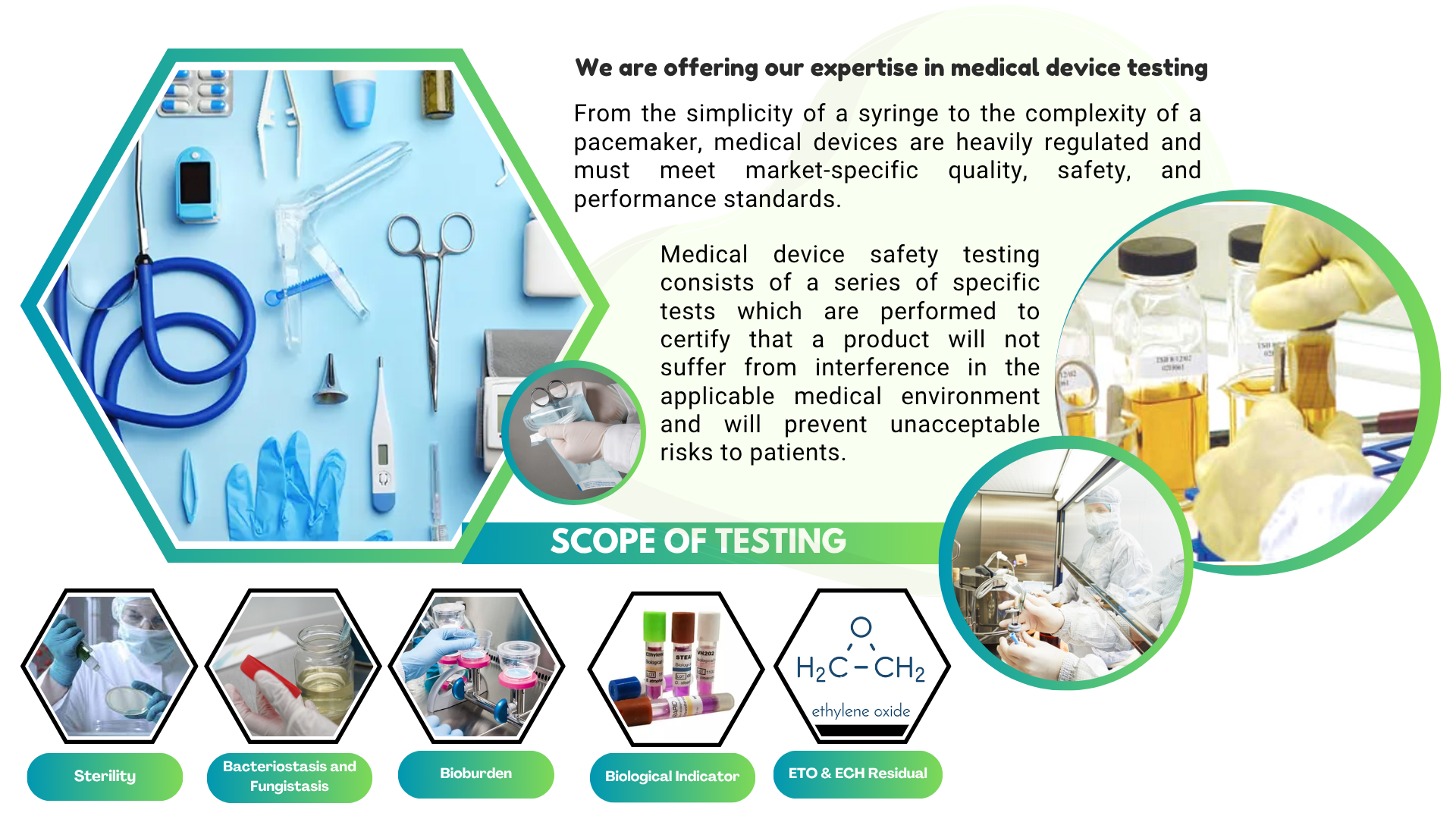Medical Device
Medical Devices require careful and regular monitoring to assure sterility is not compromised.
To meet the required Sterility Assurance Level (SAL), EO sterilization process needs to be validated.
At ![]() , we offer a wide range of tests to help you validate your sterilization process in accordance with national and international standards.
, we offer a wide range of tests to help you validate your sterilization process in accordance with national and international standards.

BIOBURDEN (ISO 11737-1)
Bioburden testing quantifies the number of viable microorganisms on a product before sterilization, ensuring the sterilization process will be effective and that the product meets safety standards.
BACTERIAL ENDOTOXIN TEST (USP 85)
A bacterial endotoxin test (BET), also known as the Limulus amebocyte lysate (LAL) test, is a method to detect and measure endotoxins from Gram-negative bacteria.
STERILITY TEST FOR MEDICAL PRODUCTS
(ISO 11737-2)
Sterility testing is a microbiological examination to determine if a product is free from viable microorganisms. The most common methods are membrane filtration and direct inoculation, where samples are incubated in a growth medium for at least 14 days to check for microbial growth.
BIOLOGICAL INDICATOR (BI) STERILITY
A biological indicator (BI) sterility test is a qualitative test that uses a microorganisms with known resistance, such as a bacterial spore, to verify that a sterilization process was effective. After a sterilization cycle, the BI is incubated to see if the microorganisms have been killed.
ETHYLENE OXIDE RESIDUAL TESTING
(ISO 10993-7)
This testing is crucial for ensuring product safety, as these residues can be toxic. The testing typically uses gas chromatography (GC) to analyze samples after they have been extracted to isolate the residues.
BACTERIOSTASIS & FUNGISTASIS (USP 71)
A crucial suitability test performed before a sterility test to ensure the product being tested does not inhibit microbial growth.
SETTLE PLATE TEST
Settle plate testing is a passive air monitoring method where petri dishes with a culture medium are left open in an area to passively collect microorganisms from the air.
After a set time, the plates are closed and incubated to allow visible colonies to grow, which are then counted to assess the microbial contamination level of the environment and its impact on surfaces.
